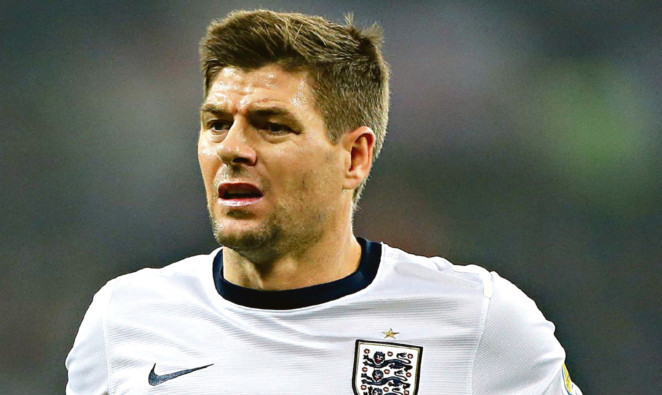
Roy Hodgson will try to make Steven Gerrard change his mind should the midfielder decide on international retirement next July.
While the Liverpool captain admits Brazil will be his last World Cup Finals, he has yet to confirm his time in an England shirt will also be at an end.
Should he do so, he’ll have the manager to answer to.
“If Steven does say he wants to retire, and I think he shouldn’t, then I’d be taking him to one side after the World Cup and asking him to reconsider,” said Hodgson.
“I understand why players make those statements, but they can change their minds.
“I know one thing. As a coach, I’d always be trying to keep what I think are my best players.”
Hodgson knows he will be at the mercy of the Premier League clubs after this month’s friendlies against Chile and Germany.
Once the players break up a week on Tuesday, there’s only a single date with Denmark in March before he has to name his squad for the World Cup Finals.
It means that for five months, Hodgson will have only club form as a guideline.
And, as is currently being illustrated by Joe Hart’s exclusion from the Manchester City side, that means some of his first-choice picks might not get regular games.
“We are always at the mercy of what happens at clubs,” Hodgson continued. “That’s the first thing you accept as a national coach.
“They make their decisions, and you have to make yours to fit round them.
“I don’t think anything has changed since I took the job.
“In fact, if anything it has got a bit easier in regard to the younger players we want to push through.
“I certainly don’t intend to have a rule that if you don’t play for your club side, you don’t play for England. I will never go that far.
“On the other hand, I’m not prepared to say that if you never get a game for your club, you shouldn’t worry because you will always be a part of the England set-up.
“I’m just going to have a very pragmatic approach to the situation, choosing who I think are the best players.
“I’m convinced that anyone who gets handed the shirt, whether they have played the last four games for their club or not, will go out and do the job.
“As far as I am concerned, we are moving in the right direction. I have had 10 qualifiers to really get a better idea of what a starting line-up could look like and which players outside that starting line-up could be causing headaches for the players on the inside.
“With Joe Hart, for instance, he only lost his place a couple of games ago. If we get to March and he hasn’t had a game in three months, that wouldn’t be ideal.”
Former England boss Sven Goran-Eriksson advocated in his recent book that England need a psychologist to assist them in winning penalty shoot-outs at major tournaments.
The FA acknowledged that with the appointment of Dave Reddin, who helped England win the Rugby World Cup 10 years ago and was part of the Team GB backroom staff at the Olympics. He will be based at St George’s Park from early next year.
“We’ve got one of the best guys coming in,” says Hodgson. “Dave has worked in rugby, and penalty-kicks are a large part of that game.
“With penalties, I would have thought fatigue plays a part as well, as in the Euros last year when we had to work so hard against Italy for 120 minutes.
“I’ve got an open mind on the subject. I’m prepared to listen, and to involve the players, because if the players don’t buy into an idea, it’s a waste of time.
“I’ve never worked with a psychologist at club level, but the mental side plays a major, major part in football.”

Enjoy the convenience of having The Sunday Post delivered as a digital ePaper straight to your smartphone, tablet or computer.
Subscribe for only £5.49 a month and enjoy all the benefits of the printed paper as a digital replica.
Subscribe